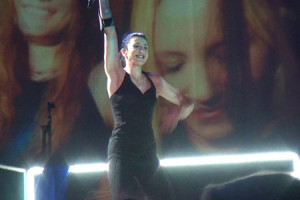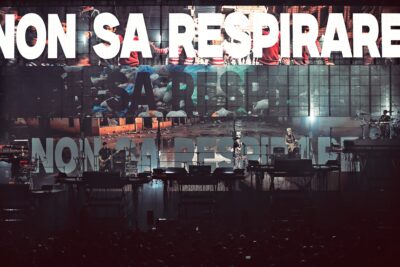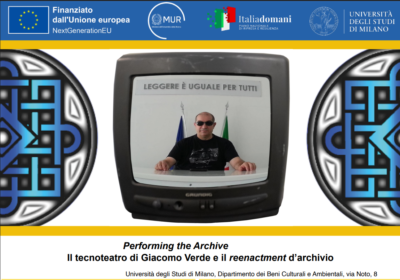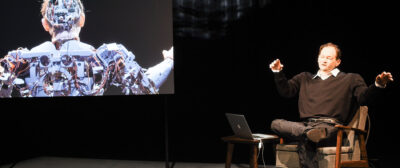Digital technology is continuously speeding forward, bringing about radical changes in our society. At a local level, this has already spawned the notion of the smart city, in which everyone is connected with everyone and everything digitally. Still, what does all this technology really mean to us? The famous Catalan theatre company La Fura dels Baus will tackle these questions with a smart show. By using their app on your smartphone you can participate in the smart city 2.0. It’s an environment which looks like normal life – there’s an economy, transport, government, issues regarding citizenship and ecology – but it might demand you to play a very different role …
BACKGROUND INFORMATION
With M.U.R.S. the Catalan company La Fura dels Baus brings us a smartshow, a performance which asks the question: what will the city of the future look like? Can we engineer our societies? How much control do we as citizens have, how much do we give away to our leaders? The show puts the audience in the middle of an interactive theatrical installation which is the city of the future, the so-called smart city, which is dominated by technological gadgets and discoveries. Visitors can individually find their own way through this future world, using a specially devised app which (mis)leads them through it.
Our cities as we know them today are the result of the industrial revolution, but, influenced by the technological revolution and our information society, they will transform more and more into smart cities. While this development has already affected individuals, businesses and the economy, our cities cannot stay behind. The current paradigms of urban life have their days numbered, according to the members of La Fura dels Baus. The race for the intelligent city has begun.

In order to experience life in this digital democracy, La Fura dels Baus have devised a theatrical experience of such a smart city. M.U.R.S. lets its audience experience for a short time what it’s like to live in a prototypical world in which all of the premises of the smart city have been realised. The economy, the environment, governance, infrastructure: all aspects of this revolution are included and all of these spheres are digitally controlled. It will offer endless possibilities to the individual, but there’s also a flipside: one click buys you a pair of sneakers online, which have been manufactured by an exploited child on the other side of the world; and with one push of the button a world leader can erase a whole people from the map, as if it’s just a game. In the smart city every human can be the oppressor as well as the oppressed. Technology has separated man from his cultural values and alienated him from pain, which can have liberating as well as disastrous consequences. What these consequences are and what they might entail, is what the makers of La Fura dels Baus are showing the audience in M.U.R.S.
The performance takes place in four different zones, all of which represent one aspect of our future city. Visitors can use an app on their smartphone (for Android as well as iPhone) to move through these locations by themselves. However, they’re not completely free, as, of course, they’re being skilfully manipulated by the show and the app.
The app allows visitors to participate in the performance by sending them messages and giving instructions, showing them extra information and guiding them in a certain direction. The visitors are encouraged to take part in various activities, which for each zone are concluded with an historic speech by a famous leader from the past. There is Adolf Hitler addressing the young people in the Wellness Zone, where the body cult takes centre stage and youth and stamina are promoted through a Zumba lesson. In the Ecological Zone José Maria Aznar gives a speech on environmental issues; in the nationalist El Dorado Zone Joseph Stalin takes to the stage; and in the Security Zone where safety, comfort and connectivity are promoted (the ‘good people’ zone) we can hear the speech that George W. Bush gave just after 9/11. The visitors are gradually being forced into a ever tighter framework, until the revolution breaks out and everyone is free to go again.
After years of developing and researching projects on their own, the members of La Fura dels Baus got back together again to create M.U.R.S. They created the show as a team, developing the technologies video projections and digital technologies together. To create the installation, they worked with academic research centres such as the Massachusetts Institute of Technology (MIT) and the Ars Electronica Futurelab in Linz, in Austria, as well as receiving support from the University of Barcelona’s Open Systems department, the University Rovira i Virgili as well as TigreLab and Direcció de Creativitat i Innovació de l’ICUB (Barcelona LAB).
BIOGRAPHY
La Fura dels Baus was formed in 1979 in Barcelona. From the very beginning they built a reputation for their original use of the spaces they performed in and for blurring the barrier between audience and performers. A London reviewer commented in 1985 that they ‘create a kind of adult adventure playground of fun, danger, slapstick and fantasy’. Since the early nineties, the company has diversified from open air performances into the realms of written drama, digital theatre, street theatre, performance and opera. Combining the use of video, music, movement and all kinds of natural and industrial materials and new technologies, the company also attract many people who are not regular theatre visitors to their performances world-wide.
Their production L’home del mil.leni (2000), celebrating the new millennium, drew an audience of more than twenty thousand spectators in Barcelona; they performed their Divine Comedy in Florence in front of more than 35 thousand people. The company has produced a number of large-scale events, including the opening ceremony of the Olympic Games in Barcelona in 1992, as well as commercial and promotional shows for corporate clients such as Pepsi, Mercedes Benz, Microsoft and Warner Bros. In 2011, La Fura dels Baus attracted controversy for performing at the 35th birthday of the Chechen dictator Ramzan Kadyrov.
The company make frequent use of new technologies, for example in their online show Work in Progress 97, in which they put on simultaneous performances in different cities in a digital environment. However, the company have also produced performances based on traditional stage plays, for instance F@ust 3.0, in which they explored Goethe’s classic; Ombra, which re-interpreted the writings of the author Federico García Lorca; and Euripides’ The Trojan Women, which they set to music by Vangelis. In 2005, they premiered their original take on Kafka’s Metamorphoses in Japan.
Since the mid 1990’s, the members of La Fura dels Baus have also performed in several operas, including De Falla’s Atlàntida in Granada (1996), Debussy’s Le martyre de Saint Sébastien (1997), Berlioz’ La damnation de Faust in Salzburg (1999) en José Luis Turina’s D.Q., Don Quijote en Barcelona (2000). For Auf den Marmor-Klippen in Mannheim (2002) they used videoconferencing as a stage element in an opera for the first time ever. That same year, they staged Symphonie fantastique, based on Berlioz’ symphony. In 2003 they staged Mozart’s Magic Flute at the Ruhrtriennale in Bochum, and reprised it in 2005 at the Opéra de la Bastille in Paris and the Teatro Real in Madrid. They returned to Paris in 2007, performing Bartók’s Bluebeard’s Castle as well as Janáček’s song cycle The Diary of One Who Disappeared. Later that year, they staged Juan José Falcón Sanabria’s new opera La hija del cielo, which they reprised in 2010 at the Teatro Real in Madrid.
In recent years, the members of the company have often been working individually on their own projects. Alex Ollé for instance, staged the opera Quartett at the Teatro alla Scala in Milan, with music and libretto by Luca Francesconi. This opera was also the opening performance at the Holland Festival in 2013. In collaboration with another member of Fura, Carlus Padrissa, Ollé created a widely acclaimed version of Aida for the opening of the Arena di Verona Festival in 2013. However, the members of La Fura have now joined forces again for their latest project M.U.R.S.





